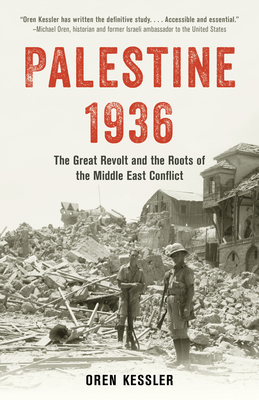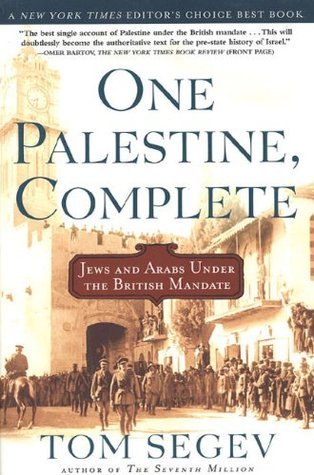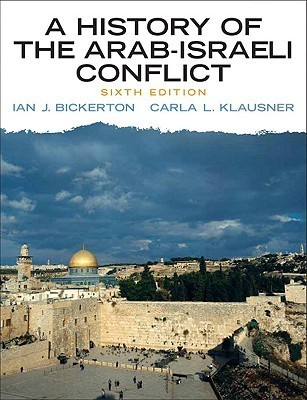
Palestine 1936: The Great Revolt and the Roots of the Middle East Conflict
Book Description
A spark ignites in the heart of Palestine, unleashing a tempest of rebellion that reverberates through time. The Great Revolt of 1936 sets ordinary lives on a collision course with unyielding power, challenging the very fabric of a fragile nation. Oren Kessler unveils the tumultuous clash between colonizers and the indigenous population, peeling back layers of historical tension and visceral emotions. With gripping narratives and vivid detail, he explores the profound consequences that echo to the present day. How did this pivotal uprising lay the groundwork for the enduring conflict we witness today?
Quick Book Summary
"Palestine 1936: The Great Revolt and the Roots of the Middle East Conflict" by Oren Kessler is a meticulously researched historical account examining the Palestinian Arab uprising against British colonial rule and growing Jewish immigration between 1936 and 1939. Kessler situates the revolt as a pivotal chapter in the Israeli-Palestinian conflict, exploring the motivations and aspirations of the region’s Arabs, Jews, and British authorities. Through personal stories, political analysis, and archival material, the book reveals how the revolt's brutality and suppression shaped both Palestinian nationalism and Zionist strategy. Kessler demonstrates that the seeds of today’s conflict were sown during these turbulent years, as patterns of resistance, violence, and competing national visions hardened and became entrenched—shaping the trajectory of the modern Middle East.
Summary of Key Ideas
Table of Contents
Colonial Tensions and the Rise of Nationalism
In the early twentieth century, Palestine was a region simmering with tension, driven by the aspirations of its indigenous Arab population, the influx of Jewish immigrants, and the complexities of British imperial rule. The historical context Kessler provides traces the gradual rise of Palestinian Arab identity and nationalist sentiment, as well as the Jewish Zionist movement’s growth in response to persecution in Europe. These forces collided under British colonial oversight, creating an unstable landscape in which conflicting promises and ambitions set the stage for confrontation.
The Impact of British Policies
The British Mandate, established after World War I, profoundly shaped the fate of both Jews and Arabs in Palestine. Kessler delves into British policies—such as facilitating Jewish immigration through the Balfour Declaration while promising autonomy to Arabs—that unintentionally sowed discord. Administrators became increasingly entangled in contradictions, struggling to appease both communities even as tensions escalated. The author highlights the Mandate’s structural weaknesses and how British actions often deepened divisions, inadvertently fueling both Palestinian frustration and Jewish security concerns.
Jewish Immigration and Settlement
The influx of Jewish settlers during the 1930s, many fleeing European anti-Semitism, was perceived as a demographic and existential threat by Palestinian Arabs. Kessler describes how land purchases, economic changes, and political organization within the Yishuv (Jewish community) heightened Arab anxieties. Arab leaders and the general populace saw these shifts as a loss of their homeland and rights, further stoking unrest and leading to calls for resistance. Jewish communities, meanwhile, strengthened their political and security apparatuses in anticipation of inevitable clashes.
Cycles of Violence and Suppression
The Great Revolt erupted in 1936 with widespread strikes, boycotts, guerrilla attacks, and assassinations. Kessler vividly captures the escalation of violence, detailing both Arab resistance and the brutal counterinsurgency carried out by British forces and, increasingly, by organized Jewish units. Retaliatory killings, collective punishment, and village demolitions became common, devastating Palestinian society. This period saw the radicalization of nationalist politics and the enduring militarization of both groups. The cost in lives and livelihoods was immense, and the hardening of narratives and identities would prove transformative.
Legacies for the Modern Conflict
The aftermath of the revolt fundamentally altered the trajectory of the Middle East conflict. Although the rebellion was ultimately crushed, its legacy shaped strategies and perceptions for generations. For Palestinians, the defeat led to political fragmentation and weakened their position in subsequent decades. For Jews, lessons learned in defense, organization, and diplomacy contributed to the later establishment of Israel. Kessler argues that the seeds of enduring strife—cycles of violence, mistrust, and competing claims—were sown in these years. The book concludes by drawing direct lines from 1936 to today’s complexities, underscoring the Revolt’s deep impact on the region’s destiny.
Download This Summary
Get a free PDF of this summary instantly — no email required.





